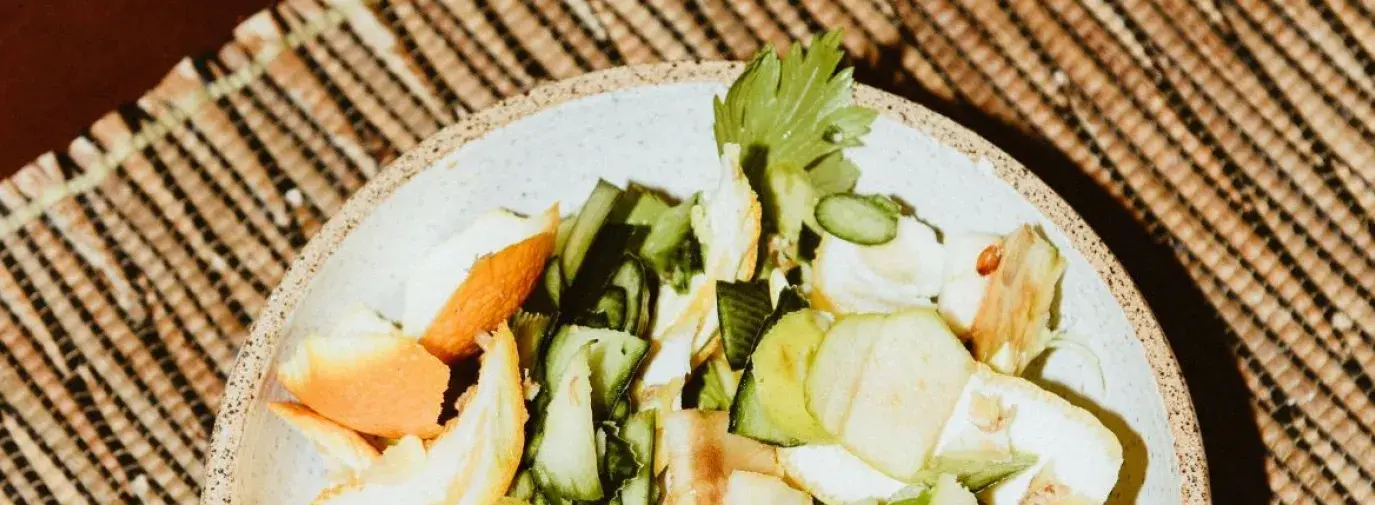
Worm composting is a great way to make use of your kitchen scraps and make your own free, nutrient-rich fertilizer for your garden. Better yet, composting reduces your climate footprint by diverting organic waste from the landfill, where it rots and releases greenhouse gases.
An in-home worm compost setup is unassuming and friendly to both house- and apartment-dwellers. If you are concerned that it will lead to unsavory odors, worry no more—vermicomposting, or worm composting, generates no smell when done right and produces usable fertilizer quickly. All it takes is a cool, dry place, such as a pantry or under the kitchen sink, and a weekly check-in on your wriggly friends. Bonus: Green Americans who already do this report the worms provide lots of entertainment and lessons for kids learning remotely.
How To Make an Indoor Worm Compost
To start your compost, all you need is a large tote bin, some bedding, and red worms (also known as red wigglers).
The recommended size is a 1’ x 2’ x 12” to 18” tall bin. Modify the bin by poking several 1/8-inch holes in the sides near the top. Add a bedding of as many of the following as you have access to: dried leaves, shredded paper (not glossy pages from magazines), food-grade cardboard (such as pizza boxes), peat moss, coconut fiber, and straw. The bedding should be several inches deep.
Dampen the bedding. It should be moist like a wrung-out dish sponge—worms breathe through their skin and need a damp, but not soggy, home. Mix in some sandy soil or potting soil, which can aid in digestion for the worms.
Push some bedding aside and add the redworms to their new home! You can order worms from Devine Gardens {GBN}, purchase from a bait shop, or source from your community such as neighbors or a gardener group. Purchased worms usually come by the pound, which is enough for most households.
Add your kitchen scraps on top to give them food, then push some bedding back on top to gently bury them. Worms love fruit and veggie scraps. Do not feed them meat and oily foods. Crushed eggshells are okay and provide grit for digestion. Check in on your worms weekly with a new delivery of kitchen scraps. You can feed them more often, but a weekly check-in may be more convenient for you and less disturbing to the worms.
When you first add the worms, they will need to adjust to their new home. You can do this by pointing a bright light at the soil for a couple days. This will prevent the worms from crawling out.
After a few months, you’ll be able to harvest the worm castings from the bottom of the bin. Worm castings are rich fertilizers—so nutritious for plants that its also known as "black gold" among gardeners! Use these castings to enrich your garden, your household plants, or share with your neighbors. Community gardens are also a great place to share the wealth. Depending on what plants you want to grow, you will need to mix the castings with minerals or grit.
Tina's Tips
Tina Jacobs, owner and founder of Devine Gardens {GBN}, is a vermicomposter extraordinaire and long-time farm owner. She sells her own composting worms by the pound and half pound. Here are her tips
for getting started with your bin.
- As you accumulate kitchen scraps throughout the week, put them in the freezer. This will prevent any unwanted pests from being intro- duced and make the scraps soft and easy to eat for the worms.
- Avoid giving the worms too much citrus. If the bin is too acidic, the worms may try to escape.
- Do not overfeed your worms. During your weekly check in, if all the scraps are gone, you can add more; if they have not finished last week’s delivery, give them less, otherwise you risk attracting bugs and unsavory odors.
- Start small! If your worms are happy, they will multiply. After a few months, you can start a second bin or teach your neighbors how to compost and share your worms.
Fun Fact: Composting reduces your climate footprint by diverting organic waste from the landfill, where it rots and releases greenhouse gases.
Worm Composting Not For You?
There are many other ways to curb your food waste without setting up an indoor worm composter. Your local farmers market is a good place to start. More and more farmers markets serve as drop-off points for municipal composting efforts.
Some local composting businesses may set up at a farmers market, where you can sign up for their services for weekly pickup on the spot. Directories a good starting point, but if you don’t see a service listed in your city, we recommend asking the organizers at your local farmers market.
Offering veggie scraps to community gardens may work, too. And if you start an indoor worm compost, you can share worm castings with the gardeners!
As environmentalists and zero-waste-enthusiasts, we love composting of any kind but not everyone may have the resources to compost conventionally. No matter your home situation, give worm composting a try and become a vermicomposter!







